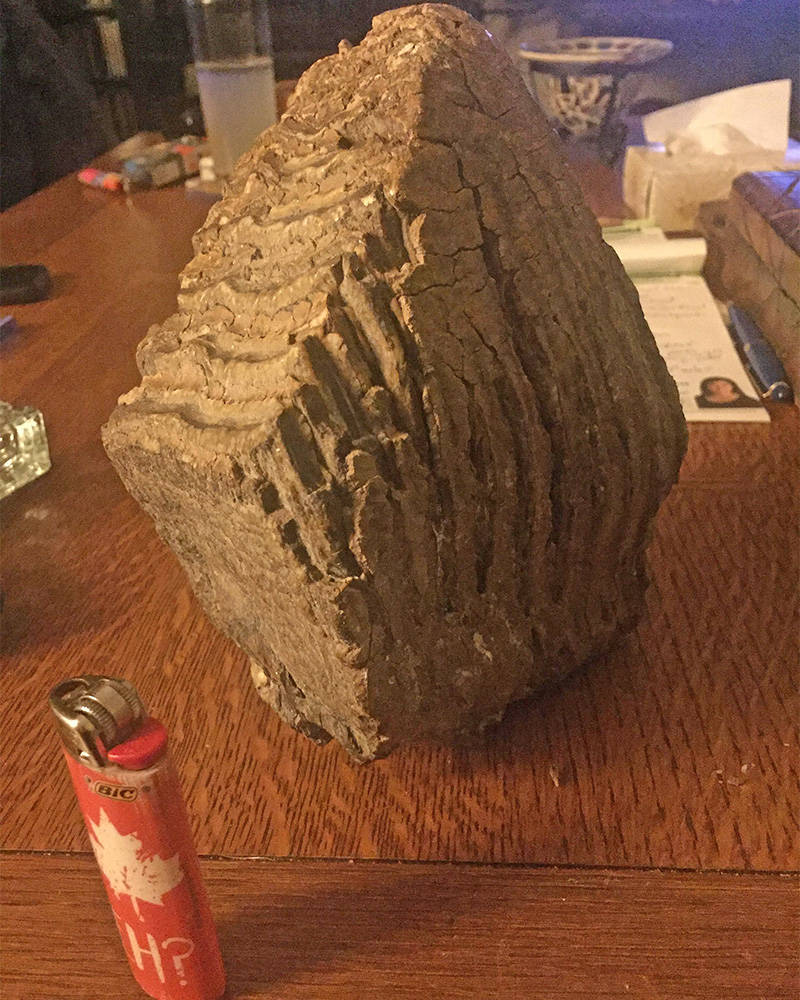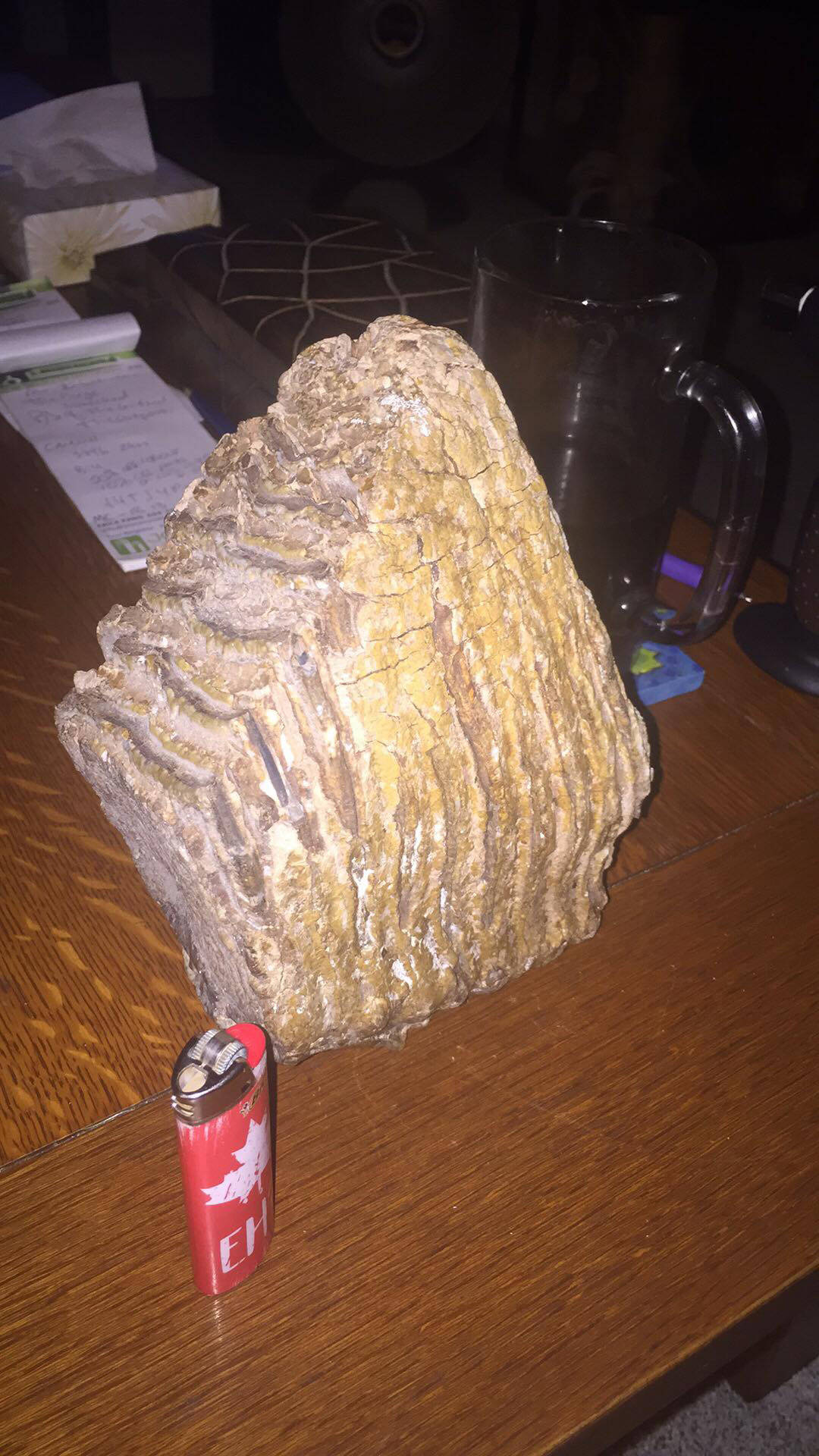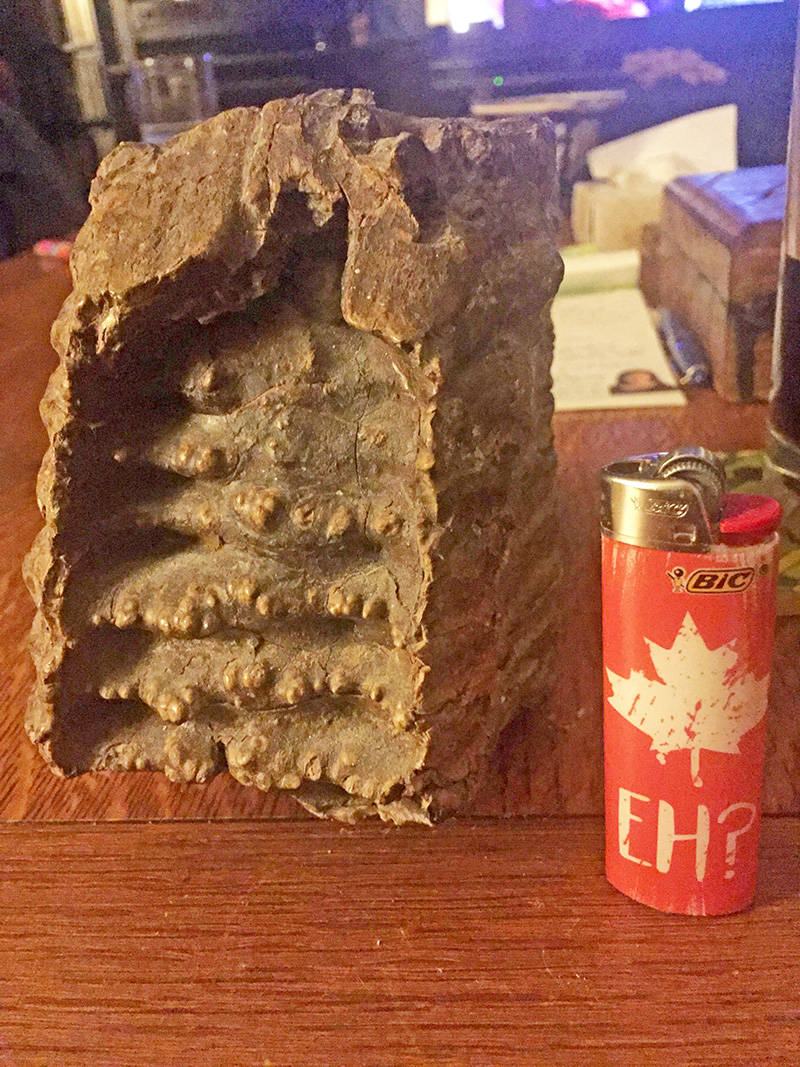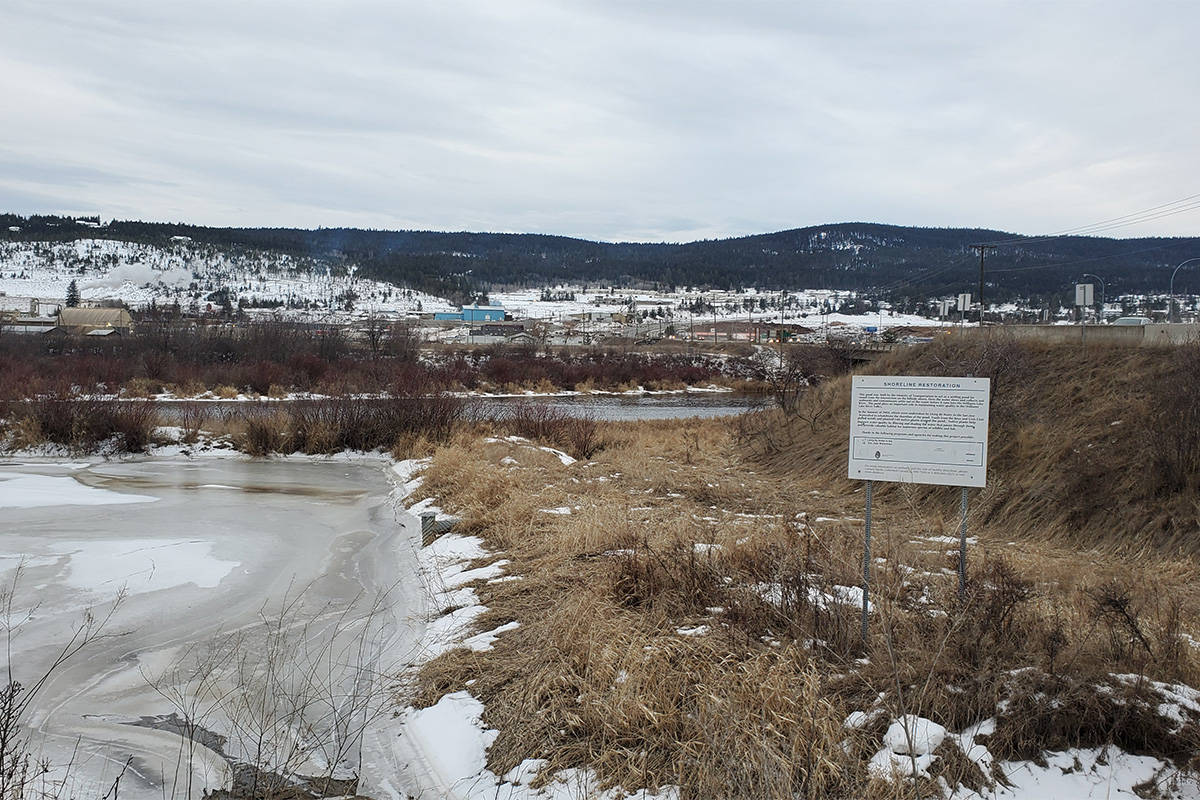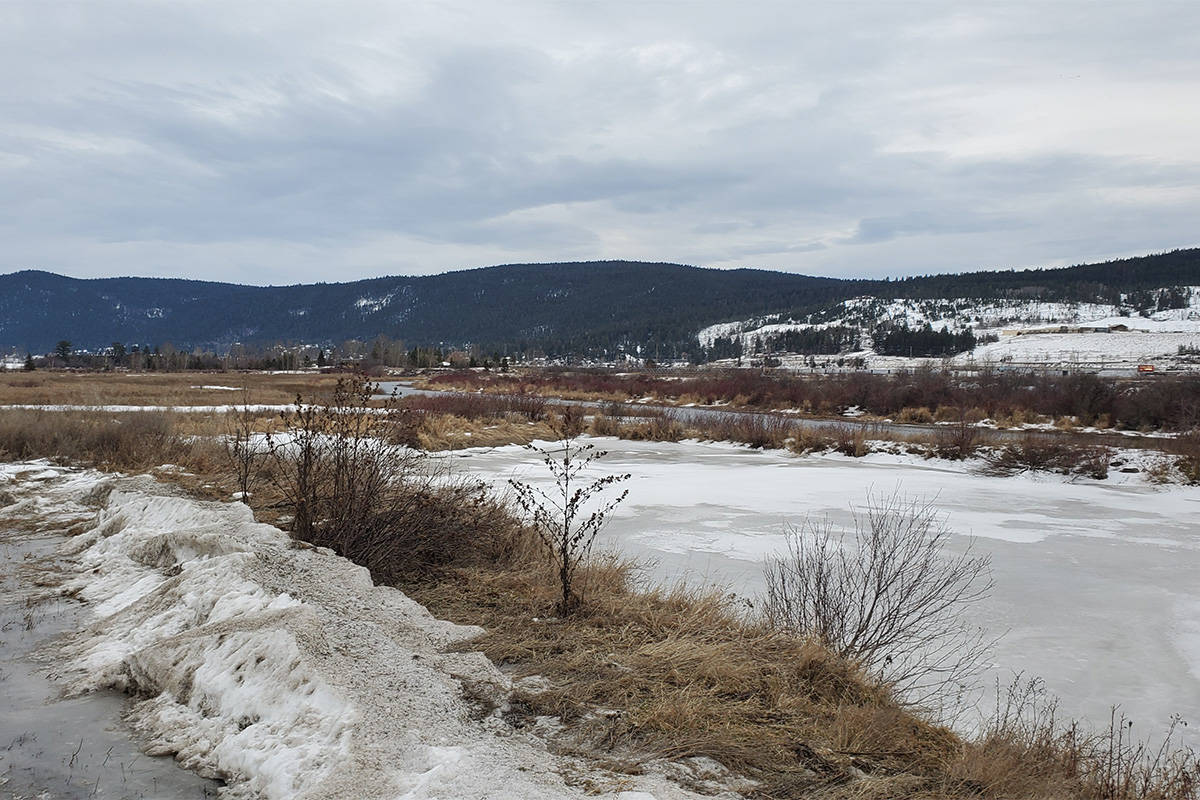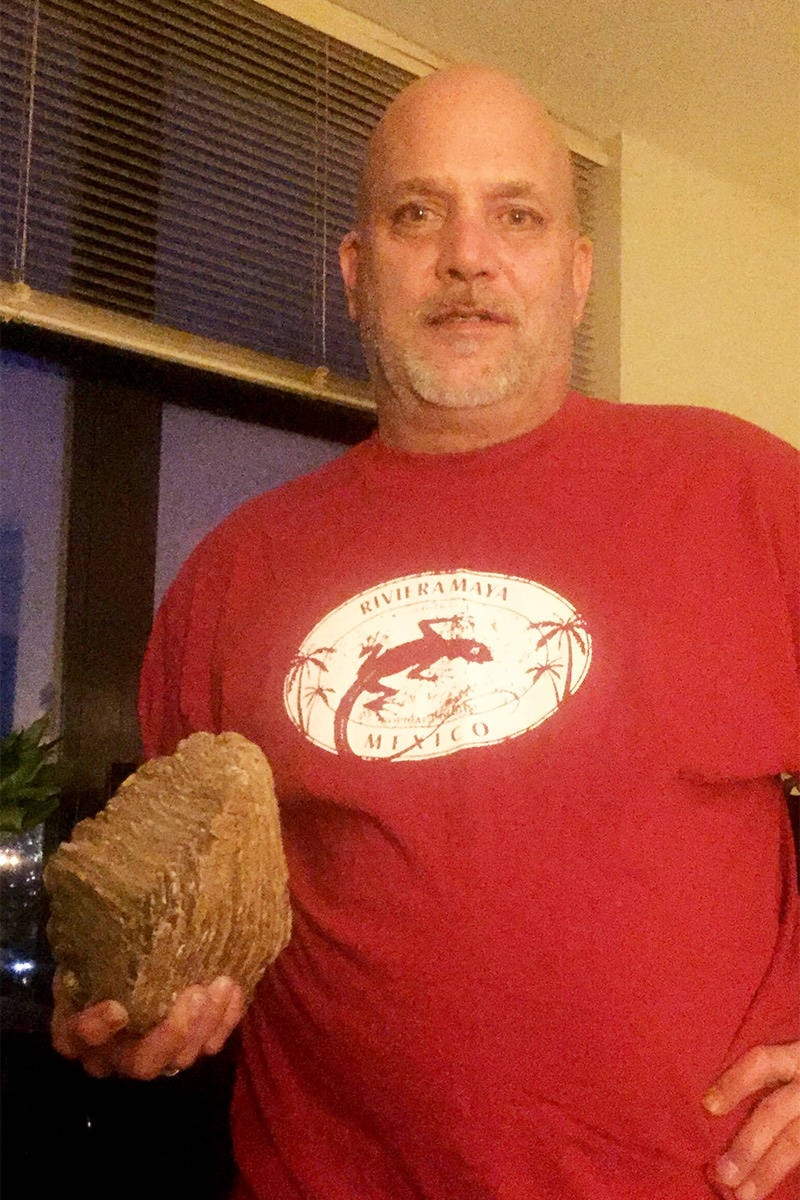A mammoth tooth discovered almost 70 years ago alongside Williams Lake Creek is now the prized possession of a Vancouver-area man.
Bryan Johnson recently received the tooth from his step dad, Michael Procter of 150 Mile House.
“He used to be the owner of the 150 Mile Pub and still lives near there with my mom, Betty Johnson,” he said.
“He found it when he was 10 years old down in Williams Lake Creek. It was something I’d always wanted so I was out there helping him two or three summers ago and he told me to take it.”
Procter told the Tribune he moved to Williams Lake with his family in 1951.
One day around that time he was playing in a field alongside Williams Creek in behind where the The Williams Lake Water Factory on Mackenzie Avenue South is today when he found the mammoth tooth.
“There were a whole bunch of other rocks there and I didn’t have a clue what it was,” he recalled with a chuckle.
“I took it home to my mother and she used it as a doorstop for years.”
It wasn’t until years later when Procter was an adult and saw something on TV that he realized it was a mammoth tooth.
Johnson said the tooth is ‘pretty impressive.’
“When you hold it and think, ‘that’s just one tooth out of that animal’s mouth,’ it’s like wow,” he said, adding it weighs eight pounds.
“It feels rough and layered with little ridges for crushing and grinding grass. If you Google mammoth teeth, you’ll find 100s of photographs and they all have these ridges in them.”
Johnson said he’s always liked ‘interesting things.’
Read more: Scientist finds fossil evidence of sabre-toothed cat in southern Alberta
“When I lived in Ashcroft, as a kid my brother and I would go to this old garbage dump at the back of Ashcroft and dig for old bottles. I’ve still got some that we collected.”
There was an old cabin, just outside of Ashcroft where he found an old bamboo flute he said was from when Chinese people were building the railway.
“I did donate that to the Ashcroft Museum and they had it on display for about five years and then I asked for it back when we were leaving there.”
Growing up Johnson visited relatives regularly in Williams Lake, where he and his brother also loved to explore.
“My uncle owned part of a gravel pit off Dog Creek Road and we used to find fossils with ferns and fish.”
Johnson said he also has his great, great grandfather’s bayonet from when he fought in the Second World War.
“I like to get unique things along the way,” he said. “I’ve got the mammoth tooth on the stereo speaker — it’s a conversation piece.”
Robert Young, associate professor in Earth, Environmental and Geographic Studies at the University of British Columbia Okanagan, said he saw a photograph of the mammoth tooth and would like to see it in person.
“It looks similar to one on display at the Vernon Museum,” he told the Tribune. “There are two identifiable species represented with these two teeth.”
One of those is a very ancient form and is representative of the first mammoth species that came to the Americas — the meridionalis — around 1.6 million years ago, he explained.
“The deal with that is that it got here at that early time, but it evolved eventually into the Columbian Mammoth and that’s what the first North Americans found — both the Columbian mammoth and the late immigrant — the Woolly mammoth— which only got here 120,000 or 130,000 years ago.”
Young said teeth preserve really well and he believes the tooth in Johnson’s possession is an older mammoth tooth — the meridionalis — because of its overall structure.
As for Johnson’s fossil finds in the Williams Lake area, Young said a lot of low-lying areas would have been filled in with gravel as glaciers advanced, which made a decent environment for deposition.
“You’ve got to bury the animal very quickly after it dies or it just breaks apart,” he explained.
In the Edmonton, Alta. area while doing his PhD research, it was in gravel pit sites that Young found 15,000 fossils and 34 species, he said.
“Many years ago I started a collection program with local gravel pit companies and they were very co-operative once they got the bug and discovered we weren’t going to shut them down,” he said. “We want them to keep digging if they are finding fossils.”
Since arriving to teach at UBCO, Young has not made similar connections to create a relationship with gravel companies, but would be keen if any one is interested.
“We can always use that as another tool for discovery,” he added.
Read more: Fossils found in Yukon in 1973 were from ancient rhino, turtles
news@wltribune.com
Like us on Facebook and follow us on Twitter
